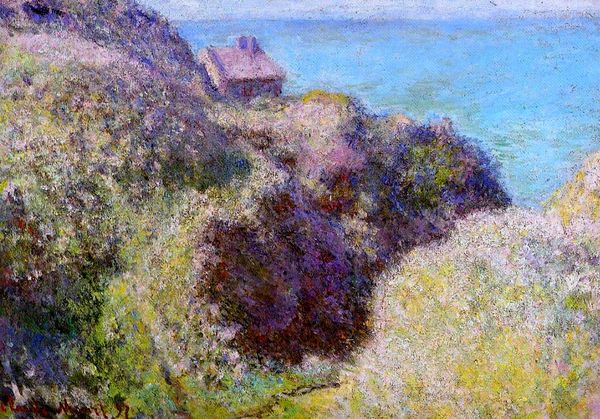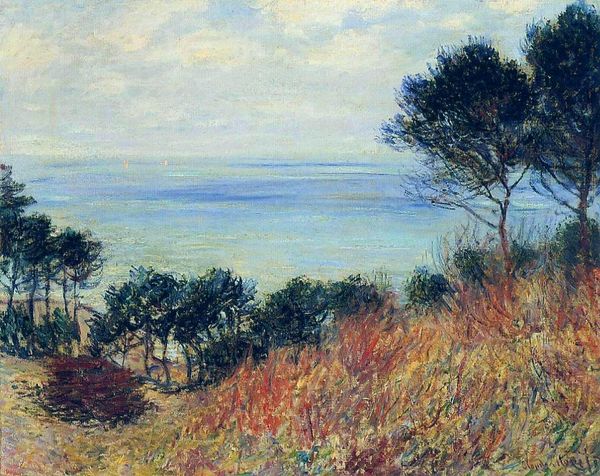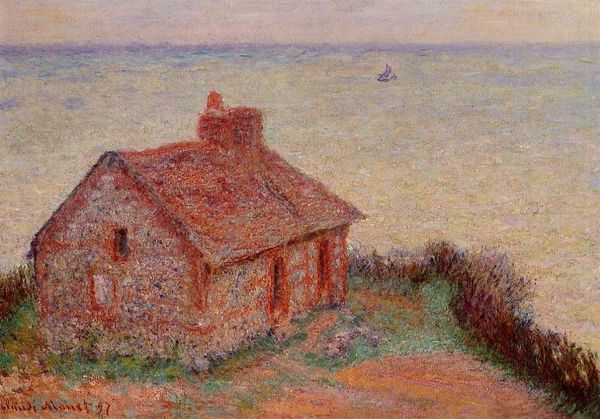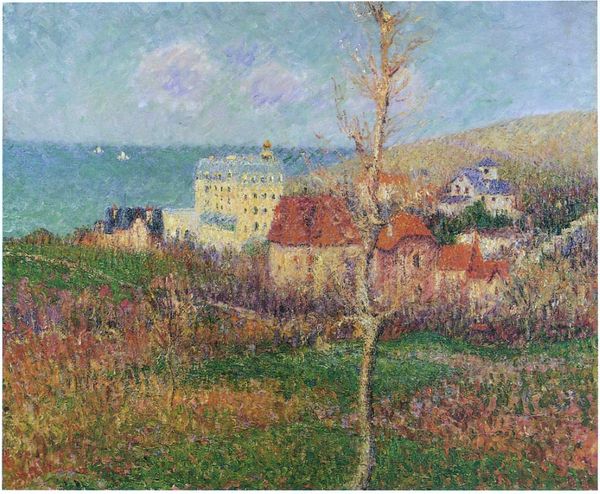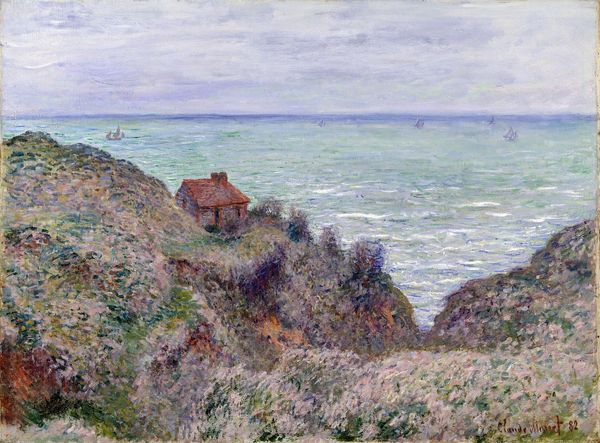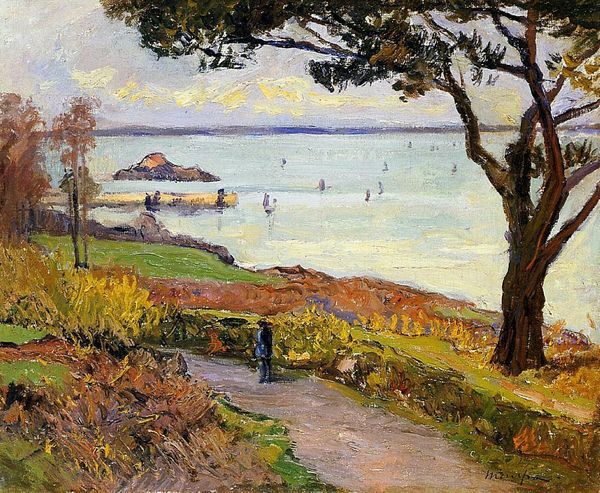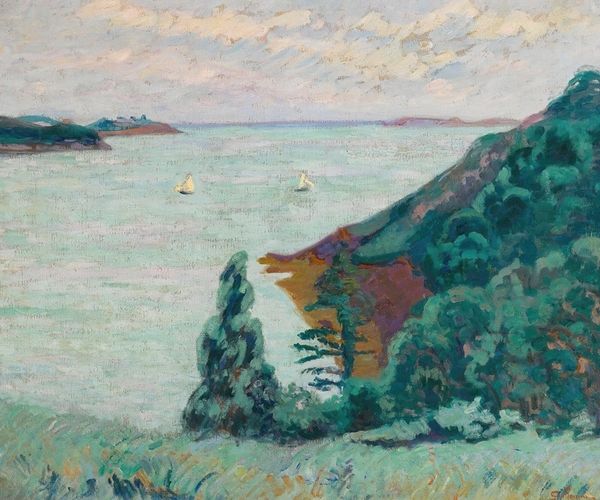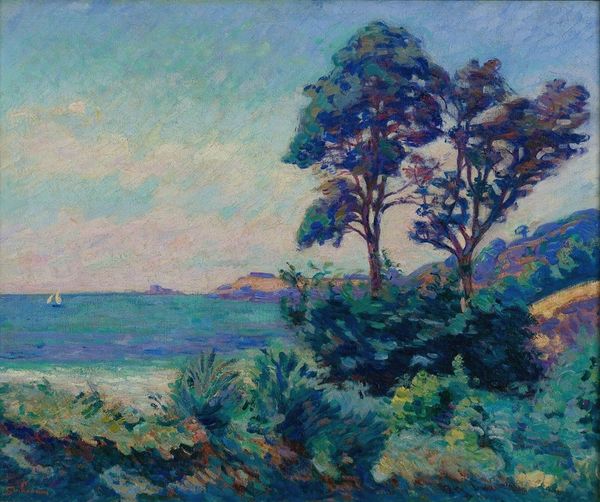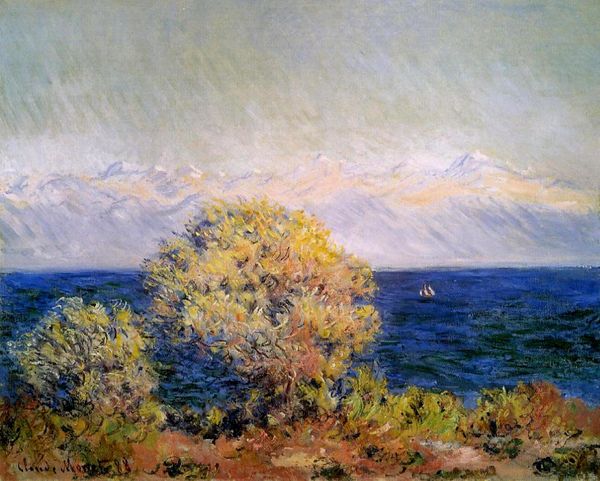
Copyright: Public domain
Claude Monet's painting of Pourville utilizes oil paints, applied with loose brushwork to capture the fleeting qualities of light and atmosphere. Monet was not inventing a new process, but deploying an established technology: the readymade paint tube. By the mid-19th century, pigments, which were once mixed by hand in the studio, were available pre-mixed and pre-packaged. This freed artists to paint "en plein air" – that is, outdoors – and to capture the world around them with spontaneity. The visible brushstrokes and unblended colors of "Pourville" reflect this emphasis on immediacy. Monet’s ability to quickly capture the landscape also ties into the industrial era, in which labor and the division of labor became central. He no longer had to grind and mix pigments like generations of painters before him. By focusing on materials and the conditions of their use, we can appreciate how Impressionism embraced both modern life and modern modes of production.
Comments
No comments
Be the first to comment and join the conversation on the ultimate creative platform.
